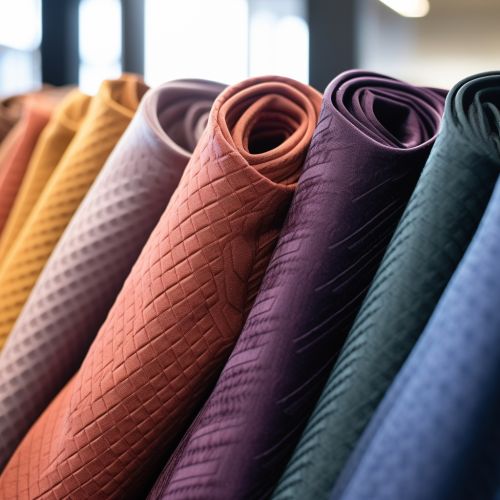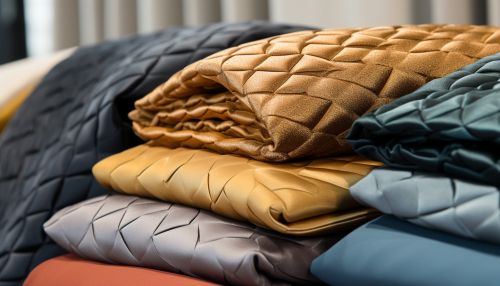Advances in Smart Textiles and Wearable Electronics
Introduction
Smart textiles, also known as Electronic Textiles, and wearable electronics represent a significant evolution in the field of material science and electronics. These advancements have led to the development of fabrics that can interact with their environment, including changes in physical conditions, presence of chemical compounds, or variations in electromagnetic fields. Wearable electronics, on the other hand, are electronic devices that are worn on the human body, either incorporated into clothing or worn as accessories.
History and Evolution
The concept of smart textiles and wearable electronics has been around since the 1960s, with the advent of the Space Age. The need for astronauts to monitor their physiological conditions while in space led to the development of wearable sensors. However, it wasn't until the late 1980s and early 1990s that the field really began to take off, with the development of conductive polymers and the miniaturization of electronic components.
Types of Smart Textiles
Smart textiles can be broadly classified into three categories: passive smart textiles, active smart textiles, and ultra-smart textiles.


Passive Smart Textiles
Passive smart textiles are the simplest form of smart textiles. These textiles can only sense the environment or stimuli. They are often used in the form of wearable sensors to monitor physiological parameters such as heart rate, body temperature, and sweat rate.
Active Smart Textiles
Active smart textiles not only sense the environment but also react to it. These textiles are capable of adapting and responding to the stimuli they sense. Examples of active smart textiles include fabrics that change color with temperature or light, and fabrics that can release a fragrance or change their thermal properties in response to changes in the environment.
Ultra-Smart Textiles
Ultra-smart textiles, also known as intelligent textiles, represent the highest level of smart textiles. These textiles can sense, react, and adapt to environmental conditions, and they can also learn from their experiences to improve their reactions over time. Ultra-smart textiles are often integrated with microprocessors and other electronic components, allowing them to perform complex functions.
Wearable Electronics
Wearable electronics, also known as wearable technology or wearables, are electronic devices that are worn on the body. These devices can perform many of the same functions as mobile phones and laptop computers, but they are designed to be more portable and more integrated with the user's body.
Types of Wearable Electronics
Wearable electronics can be classified into several categories, including wearable sensors, wearable computing devices, and electronic textiles.
Wearable Sensors
Wearable sensors are devices that are worn on the body to monitor various physiological parameters. These sensors can measure parameters such as heart rate, blood pressure, body temperature, and physical activity. They are often used in the field of health and fitness to monitor the wearer's physical condition and performance.
Wearable Computing Devices
Wearable computing devices are small electronic devices that can be worn on the body. These devices can perform many of the same functions as a computer, including data processing, internet connectivity, and running software applications. Examples of wearable computing devices include smartwatches, smart glasses, and wearable cameras.
Electronic Textiles
Electronic textiles, also known as e-textiles, are fabrics that have electronics and interconnections woven into them. These textiles can be used to create clothing that can interact with the environment and the wearer, providing functions such as heating, lighting, and sensing.
Applications
Smart textiles and wearable electronics have a wide range of applications, from health and fitness to fashion and entertainment.
Health and Fitness
In the field of health and fitness, smart textiles and wearable electronics are used to monitor physical activity and physiological parameters. These devices can help individuals track their fitness progress, monitor their health conditions, and even provide real-time feedback to improve their performance.
Fashion
In the fashion industry, smart textiles and wearable electronics are used to create clothing and accessories that can change color, light up, or even display digital images. These technologies allow designers to create innovative and interactive fashion items that can respond to the wearer's movements or the environment.
Entertainment
In the entertainment industry, smart textiles and wearable electronics are used to create interactive costumes and props. These technologies can be used to create special effects, such as costumes that light up or change color in response to the performer's movements.
Future Trends
The field of smart textiles and wearable electronics is expected to continue to grow in the coming years. Future trends in this field include the development of more advanced sensors, the integration of artificial intelligence into wearable devices, and the creation of more sustainable and environmentally friendly smart textiles.
